Stereo Investigator Whole Slide Edition interface overview
Overview
Most of your work will take place in the Main window that opens when you launch Stereo Investigator Whole Slide Edition software. You can also view your work in the 3D visualization window. Both are described in the "slide shows" below.
Main Stereo Investigator Whole Slide Edition window
Browse the "slideshow" below for an overview of the principal components in the Stereo Investigator Whole Slide Edition Main window.
Main window
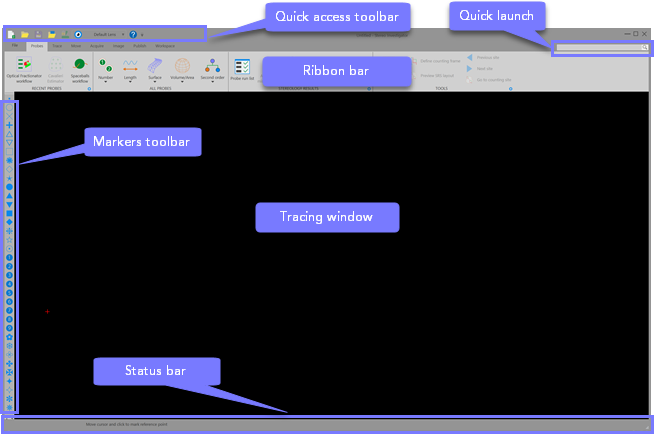
-
The Main window displays a live-camera view from your microscope or a previously acquired image/image stack.
-
The Status bar at the bottom of the Stereo Investigator Whole Slide Edition software window reports ongoing processes and alerts you if there are problems. Learn more about the Status bar.
- Customize your workspace by setting up docked windows for tools that you use frequently.
Tool Ribbons
The Ribbon bar contains tabs for the File menu and several task-oriented tool Ribbons.
- Click the tabs to access each tool ribbon (or the File menu)
- Tools are clustered by function on each ribbon.
-
 Quickly access Preferences for the tool group by clicking the gear icon on the ribbon.
Quickly access Preferences for the tool group by clicking the gear icon on the ribbon. - You can hide the ribbon bar by right-clicking the ribbon area and choosing Minimize the ribbon
Probes ribbon
The Probes ribbon contains tools for stereological analyses.
Access workflows for the most commonly used probes: the Physical Fractionator, and the Connectivity Assay.

Tool Ribbons (continued)
The Workspace ribbon includes all of the dockable windows—tools that you may use frequently.

The Pipeline ribbon includes tools that speed up your work, including the batch pipeline and automatic cell detection.

The Image ribbon includes tools for adjusting and organizing images, illumination correction, and many other functions.

Other available tool ribbons are the Trace, Move and Publish ribbons
Quick access tools
The top of the Main window includes tools to help speed up your work.
The Quick Access toolbar at the top left of the Main window provides easy access to the tools you use frequently.
-
Right-click any tool in any ribbon and click Add to Quick Access Toolbar.
-
Use the right-click menu to remove tools or reset the Quick Access toolbar to its default.
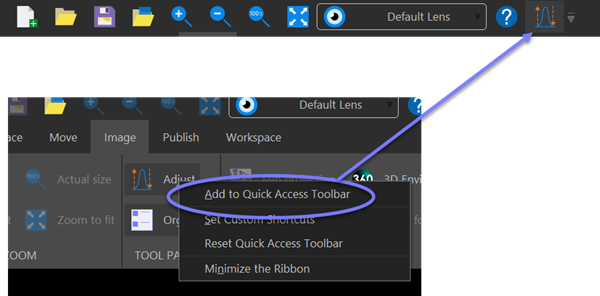
The Quick Launch at the top right of theMain window jumps you to the tool you're looking for: start typing the name of the tool or command in the box, then click the item you want from the list that appears
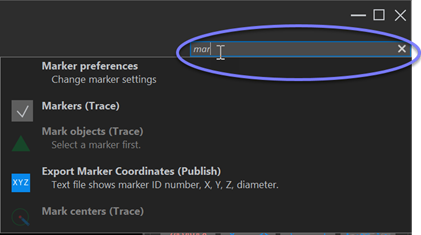
Drag and drop files to open them
The quickest way to get started with Stereo Investigator Whole Slide Edition software is to simply drag and drop files onto the application window.
Different dialogs open, depending on whether you drop image or data files; indicate how you want to handle your files.
Image and image-containing files(for example Leica .lif or Zeiss .czi files), the Image Opener window appears: |
Data files(for example .xml and .dat files), the Drag and Drop File Open window appears: |

|
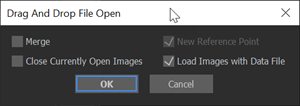
|
Light and Dark interface themes
Go to File > Preferences > Display and choose your preferred Stereo Investigator Whole Slide Edition software theme.
-
The Dark theme was developed for working with fluorescence images
-
and the Light theme for brightfield images.

3D Visualization window
The 3D visualization window is more than a visualization tool; you can also edit contours and markers, create video clips, and export your 3D representations.
View the slide show below and use the help icons in the software to learn more about specific features.
Also see 3D visualization overview.
Learn more about the 3D-window button bar.
View a short video introduction to the 3D visualization window (1:17) on YouTube
3D visualization window

Click the 3D visualize button on the Registration, Image, or Workspace ribbon to open the 3D visualization window.
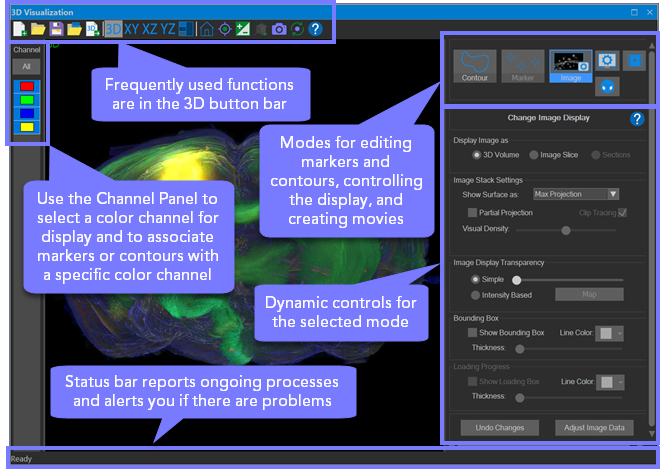
Navigating in the 3D window
Use your mouse and the navigation tools in the 3D button bar
 Use your mouse to:
Use your mouse to:
- Rotate: Drag the mouse to rotate the image around a pivot point.
- Zoom: Scroll the mouse wheel to zoom in or out.
- Pan: Hold the Shift key on your keyboard and drag your mouse to pan.
The 3D visualization window button bar includes many commonly used functions (some are repeated from the File menu).

Customize image and scene display
Learn more about changing the Image display
Learn more about changing the Scene display

Editing contours in the 3D window
Contours are 2-dimensional shapes that you can create in the main (2D) window to define regions of interest.
You can edit contours in the main window or in the 3D visualization window.

Editing markers in the 3D window
Place markers in the main (2D) window to mark features of interest.
You can edit markers in the main window or in the 3D visualization window.
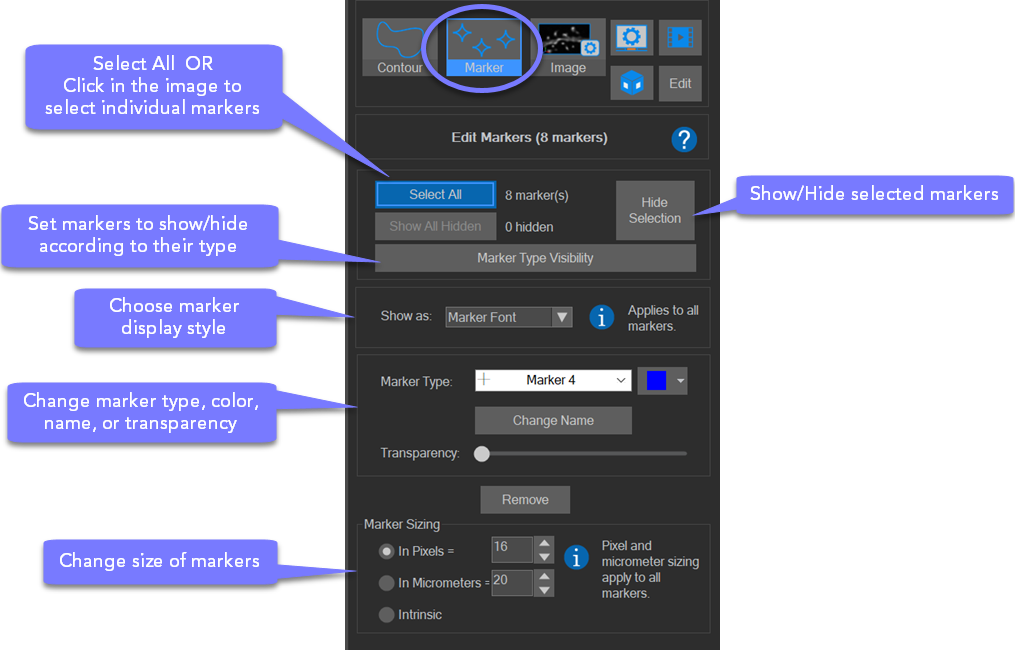
Additional tools in the 3D environment
Smaller buttons represent additional tools for working with your images in the 3D environment.


|
Change Scene Display: Click the button to modify display settings, such as adding scale bars, 3D-stereo effects, and background colors. |

|
Create Movies: Create mp4 movies of your images or tracings. |

|
The Edit button appears when editing functions are available. For example to edit markers or contours. |

|
Subvolume: Specify subvolumes (regions of interest) and load image data only from those regions. You can then work in easily managed portions of the image volume. By creating subvolumes that overlap slightly, you can reconstruct the entire image volume piece by piece. |